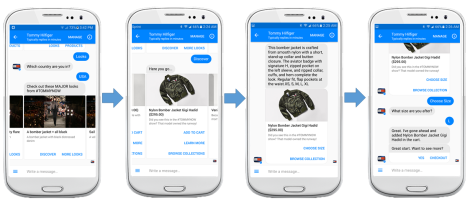Can’t really miss the Netcomm Forum 2019 in Italy, one of the most interesting e-commerce events in Europe where every year the whole digital community gathers to share opinions, analysis, data and more on the latest trends. As usual we couldn’t spot only the big players like Google, Amazon, Alibaba, and many others, but also a valuable selection of large, medium and small companies that animate the digital market. Among the interesting thoughts in the followup of the two-days workshops in Milan, we can share some precious insights that suggest, above all, the great need of a greater European integration on digital themes and the urgent need of a further progress on online sales in Italy, still too late when it comes to SMEs that are still struggling to fill a long-standing gap between an immature supply-side compared to a more evolved demand-style.

Home made picture of the plenary. Interesting to see how there is a correlation between digital skills and the level of e-commerce evolution
Among the data highlighted in the plenary sessions it is certainly not surprising to see confirmed the frenetic progression towards omnichannel retail that overcomes the traditional distinction between online and offline commerce. In a world where the customer comes into contact with the brand through an ever increasing number of touchpoints ranging from in-store experience to online contacts with the digital assets of the company, it is unthinkable to approach a complex relationship of this type by separating in various silos the various shreds of the customer’s experience. A confirmation is also in the big investments that aim very much at using AI and similar technologies to improve the service to a demanding, multifaceted and omnichannel customer, and transform their physical sales points into a super-technological experience full of magic mirrors in the dressing room able to profile, learn, suggest, dare to give a hint.

Projects Muze (Zalando) an interesting application of artificial intelligence to retail in the fashion industry
An advanced marketing that also arrives “upstream” of the production experience, arriving in some cases (see Tommy Hilfiger cited precisely during the event) that uses the big data acquired in the relationship with customers to harmonize them with the consumer trends of the sector to send evolved suggestions to their designers, no longer locked up in a top-down approach or abandoned to their own individual artistic and design sensibility, but projected into an extended range of possibilities offered by cutting-edge technology.
On the Italian side, it is not surprising that there is a clear delay that has structural repercussions on the country: the delay in e-commerce is increasingly accompanied by a digital delay compared to European competitors, where the correlation between poor digital skills and e-commerce is evident. of SMEs definitely at the end of Europe with 28 countries, and compresses online Italian exports (and domestic sales) in a market-like appearance dominated by intermediaries: large marketplaces and digital retailers, while even the most structured brands end up entrusting in a sort of complete outsourcing one of the most sensitive aspects of one’s business.

An example of digital retail from Tommy Hilfiger
One of the most illuminating counter-proofs is the fact that the Italian consumer squirts at the top of the online shopping list when it comes to e-commerce crossborder (from abroad) entering Italy, a testimony not even too concealed of the lack of evolution of the domestic offer. Even if it is an anticipation of European and global trends: by 2022, in fact, a quarter of shoppers will buy abroad, therefore the competitive game is the one between the marketplaces that have included the stakes and are active in further qualifying their offer and in intervening with cross-border solutions that are specific or native. Among the most popular categories are those of the 3F (food, furniture, fashion) of Made in Italy.

The physical store becomes a very important touchpoint in the new retail: offline to online screens, salespeople who become consultants and personal shoppers, advanced experiences in step with the new millennial and generation Z consumers
In Europe, a reflection is needed: first of all on a homogeneous taxation of digital companies, to prevent multi-level or unbalanced competition between different member countries, as well as greater business training on what will happen in September with the entry into force of the strong customer authentication, which will certainly make its effects felt on the commercial conversion rates of online purchases in Italy and Europe.
But the greatest challenge for Europe and Italy is to fight on the one hand the digital emergency of some countries further back in the DESI index (which frames the maturity of the member countries in this field very well), on the other hand, to guarantee effective support to SMEs that compete in the global arena on e-commerce channels, before they remain out of the game, without even a minimum of growth space for the technological challenges of the future: artificial intelligence, big data , new retail.

Interesting is the project by Patrizia Pepe and VAR Group that are evolving their physical boutiques into futuristic, fully integrated O2O (offline to online) sales outlets